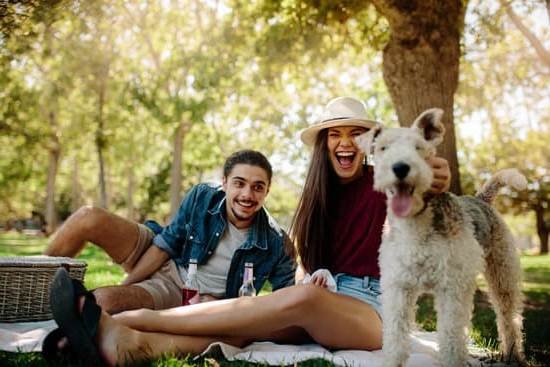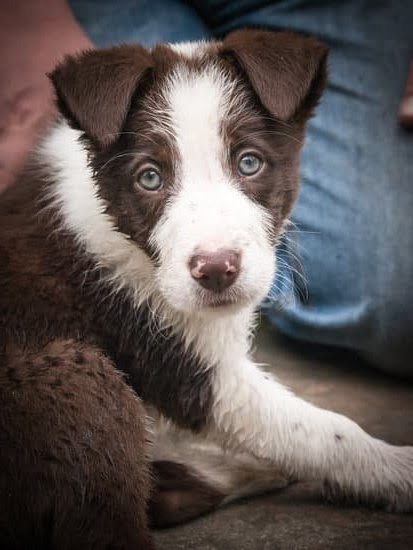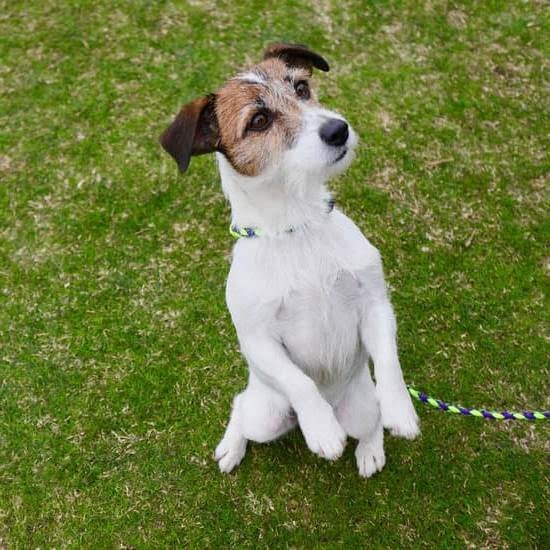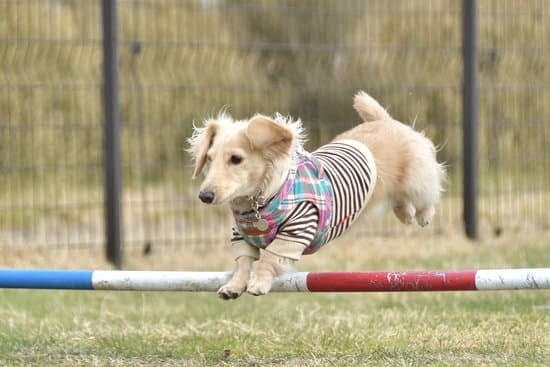Focus on Differentiating Dogs
When it comes to training a dog not to jump up, different breeds and personalities will require different techniques. For example, some breeds will instinctively be more prone to jumping up due to their natural traits and personality. Breeds such as the Golden Retriever, Beagle, or Foxhound are all commonly known for being affectionate and often enthusiastic in their greetings. As such, they may need extra attention when learning how not to jump up.
It is also important to keep in mind that each individual dog is different, even within the same breed. That means that certain dogs may display high energy levels and an eagerness to please while others may be more stoic and cautious of new people. Owners should attempt to identify these traits in their own pets before beginning the process of teaching them not to jump up.
The key when training any dog not to jump up is patience and consistent practice. Owners should provide clear boundaries for their pet by firmly telling them “No” without displaying any hint of aggression or irritation. They should reward your pup with treats or verbal praise whenever they refrain from jumping up on people or remain quiet if instructed too. Overall, this process requires patience but also provides an amazing opportunity for owners and their furry family members alike to bond through leadership.
Prevention Over Punishment
One of the best ways to train your dog not to jump up is to establish a preventative measure. Start by understanding when and why dogs jump, as this can help you identify potential triggers that could lead to undesired behaviors. A few basic reasons for jumping include greetings, excitement, or even the desire for attention. Whenever such situations arise it is important to safeguard against jumping from occurring by distracting your pup with a toy, treat, or simple command. Teaching them proper “sit” and “stay” commands will help set boundaries and establishes expectations placing a focus on positive reinforcement rather than punishment in order to achieve desired outcomes. Additionally, keeping consistent with these lessons allows your pup to remain focused and get into a routine that prevents wandering eyes and uncontrolled behavior. Allowing them to become accustomed to proper boundaries helps prevent any out of control moments associated with your pet’s anticipation when meeting new people or animals – ultimately keeping their paws firmly planted on the ground rather than jumping up on anything they come across.
Understanding Different Environments
Training your dog not to jump up is a difficult task, but with time and patience it can be done. The first step is understanding why your dog jumps up on people or objects in the first place. Often, jumping up is a sign of excitement in response to unfamiliar or stimulating environments. This behavior can be inadvertently reinforced when owners pet their dogs to stop the excessive jumping.
To properly train your dog not to jump up you will need to remember that different environments may affect your pup’s behavior in different ways. It may take some trial and error as well as observation in order to understand which situations bring on the unwanted jumping-up behavior. Once you identify what triggers this response, you can address it accordingly. If your puppy performs his preferred action when he sees other people or animals, use positive reinforcement such as treats and verbal cues to encourage him not to jump and instead give polite greetings like sitting or lying down. Create an environment where appropriate behaviors (like sitting before being greeted) are more often rewarded than inappropriate ones (jumping). Additionally, consider using distraction techniques such as fetching toys when tempting situations arise; this will divert your pooch’s attention away from the impulse of jumping and will help form desired behaviors over time.
Seeking Outside Help
Some people find it helpful to work with a professional dog trainer or behavior specialist when training their dog not to jump up. A behavior specialist or certified professional dog trainer is highly trained and will be able to customize individualized training plans, tailored to the unique circumstances of each owner-dog team. For example, they can evaluate the home environment and note any potential sources of triggers in order to make recommended changes. A behavioral specialist can also offer valuable feedback regarding progress made during practice sessions and suggest alternative methods for successfully addressing unwanted behaviors. Additionally, an experienced trainer may possess a more extensive range of tools at their disposal; such as clicker/positive reinforcement training, scent markers, check cords, and e-collars (when used properly), which could potentially help speed up the progress made during your practice sessions. Ultimately, working with a certified professional may be just what is needed for those owners who are feeling overwhelmed by their furry friend’s unruly behaviors; including jumping up.
Increasing Your Bond
Training your dog not to jump up is essential if you want a strong bond with your pup. One of the best ways to do this is through positive reinforcement, such as offering treats and praise when they resist jumping. Additionally, it’s important to set boundaries. If your puppy jumps up, try saying “Down!” or blocking them with a hand in their chest. With enough consistent practice, they’ll learn that jumping isn’t allowed and start to stop on their own. You can further reinforce good behavior with rewards so the pup understands what you’re looking for. Spending time practicing tricks together and providing verbal praise are great ways to make them understand how proud you are of them for following commands and make sure that the bond between you two stays strong. Once puppies understand not to jump, it’s easy to progress onto more activities like teaching them tricks or getting out for long walks together that will all increase the bond between both of you while also having fun with each other!
Dealing With Interruptions
If your dog jumps up when visitors come over, it can be embarrassing and sometimes even a safety concern. To address this behavior, start by setting basic ground rules with every guest that they need to ignore your dog until he has calmed down and is sitting nicely. This will not only help to avoid any accidents or injury, but it will also give you time to focus on setting the right tone. Teaching your pup alternative behaviors is the key to mitigating jumping.
When you notice them beginning to jump and bark, move quickly toward them (without bending down) and place one hand firmly in their chest while delivering a calm “No”. The goal here is not necessarily to stop them from jumping, but rather to start redirecting the energy into something more appropriate like sitting politely for attention. Reward desired behavior with treats and verbal praise as soon as it happens. Also remind visitors ahead of time that when your pup does sit politely for them, they need to reward him with attention instead of petting him or trying to get away from him. Finally, practice these steps regularly when people come over (even if the risk of your dog jumping up is low), so that the behaviors become second nature for both you and your pooch!
Redirecting Attention
One way to redirect your dog’s attention away from jumping up is to offer them a new activity. If you know that your dog loves playing fetch, bring out their favorite toy and start throwing it around. This way, your pup has something else that requires his focus and energy, rather than using it for jumping up on people. Additionally, this encourages them to associate positive behaviors with playtime as bonuses rather than negative ones such as jumping up. You can also use treat-based games or puzzles like chew toys so their concentration is still towards something positive instead of negative behavior. Similarly, giving your dog an appropriate chew bone or rope toy can be used in the same manner to steer the attention away from jumping when someone comes in. Finally, any distraction technique works wonders when trying to break the habit of jumping up – try clapping or making a high pitched noise – either will almost certainly grab your pup’s attention long enough for you redirect it somewhere else!
Capturing Progress
An effective way to train your dog not to jump up is by capturing progress. To capture progress, you must be able to recognize it and reward it accordingly. Start by noticing the smallest signs of improvement when your dog isn’t jumping up such as instinctively turning away from you or refraining from jumping up for a few seconds. Once you have identified these small improvements, reward your dog with positive reinforcement like praise or treats. This will reinforce the behavior you want to see and motivate your dog to keep progressing. Additionally, make sure your training sessions are short and frequent with plenty of rewards. This allows your pup to stay focused on the task and builds good habits over time.
Establishing Routines
Having a daily routine will help teach your dog not to jump up. Establish set times and specific places for exercise, potty breaks, meals and snuggle time with you. If jumping up is a problem, make sure every team member queues your dog in the same way every single time. By being consistent with commands and expectations, you can begin redirecting unwanted behavior.
Training is key when it comes to discouraging your pup from jumping up. Positive reinforcement will be most effective in encouraging appropriate behavior! For example, as soon as your pup’s paws come off the ground on approach, use verbal cues or hand signals shake paws while rewarding them with small treats or positive discussion. This will help create an association between good behavior and rewards instead of punishment.
It’s important to practice these commands regularly to reinforce proper training so it becomes automatic for your furry companion. You can use a variety of activities such as games in different locations that challenge them mentally like clicker training or agility courses; this helps keep things interesting while providing motivation and further solidifying desired behaviors! Try including indoor activities such as nosework or food puzzles if outdoor playtime isn’t feasible due to bad weather or other commitments.
Creating a routine, using positive reinforcement techniques and putting them in “training mode” are all effective ways to help reduce their jumping habit – with consistency over time they should no longer jump impulsively when people come into contact with them!
Troubleshooting Common Situations
One of the best strategies for teaching a dog not to jump up on furniture such as couches and beds is to make sure that he or she has their own comfy bed or blanket nearby. Installing physical barriers such as a baby gate or fence can also be effective in keeping the dog out of off-limits areas. Providing plenty of toys and chew objects can help deter your pup from getting on the furniture in the first place. If your pup does try to jump up, give them an immediate redirection to an appropriate activity by giving them another toy or offering them a treat.
It’s important to remember that dogs may need multiple reminders before they understand something new. If they continue jumping, it’s important to remain consistent with positive reinforcement when they do not jump. Make sure you offer verbal praise and a tasty reward any time they choose not to jump. Additionally, it can be helpful to provide a timely physical correction by pushing the pup away if they attempt the behavior – but don’t forget about praise afterward for choosing not to jump!

Welcome to the blog! I am a professional dog trainer and have been working with dogs for many years. In this blog, I will be discussing various topics related to dog training, including tips, tricks, and advice. I hope you find this information helpful and informative. Thanks for reading!





